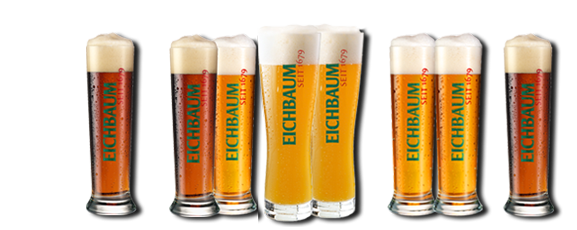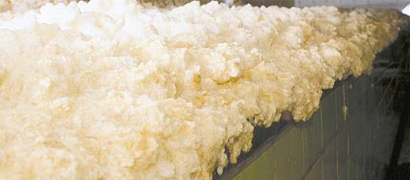
>> Beer >>Beer categories
Beer glossary
Can you categorise beer? What is “top-fermenting”? And what are "Starkbiere"?
Don’t worry! You don’t have to become a beer expert. Just check out these terms here below.

TOP-FERMENTING
This term indicates that in such a beer the yeasts rise to the top during fermentation. The required higher temperature (15° C - 22° C) mean the yeasts produce more fruit esters and alcohol, often making the beer more fruity.
BOTTOM-FERMENTING
In bottom-fermenting beers, after fermentation the yeasts settle at the bottom of the fermentation tank. This means they require a longer ageing process, so in the past they were also more durable than top-fermenting beers. Their production requires temperatures of below 10° C. An all-year-round production thus required the invention of refrigeration. A “Märzen” (from German März = March), for example, had to be brewed by March.

In Germany, beer types are types in terms of the underlying tax laws, based upon their original wort content.
- Einfachbier: with an original wort content of 1.5 % to 6.9 % and an alcohol level of 0.5 % to 1.5 %
- Schankbier: with an original wort content of 7 % to 10.9 % and an alcohol level of 2.8 % to 4.4 %
- Vollbier: with an original wort of 11 % to 15.9 % and an alcohol level of ca. 3 % to 5 %
- Starkbier: from an original wort of at least 16 % and an alcohol level from 6.5 %.

- Alcohol level: During the brewing process, a quarter or a third of the original wort is converted into alcohol. The rest (about a third) is the pure alcohol content.
- Low alcohol beer: Has a maximum alcohol level of 1.5 %.
- Alcohol-free beer: Has a maximum alcohol level of 0.5 %.
Glossary

The original wort (content) signifies the fermentable potential of the brew and is a decisive brewing factor. It indicates the share of the hops and malt’s non-volatile substances dissolved in water prior to fermentation. These are primarily malt sugar, protein, vitamins and aromatic substances. The original wort content is decisive for the beer’s alcohol level and nutritional value later.
Malting barley (or other types of grain) is soaked in water and then germinates. The germ buds are dried and now form the malt.
Typical malts:
- Pilsener Malz
- Münchener Malz
- Wiener Malz
- Weizenmalz
- Caramell-Malz
During mashing, heat and rest will remove from the malt the substances the beer needs. Solid substances will then be lautered from the liquid. The result is called the wort, to which hops are added. This is now boiled, cooled sown and after the yeasts have been added, fermentation starts. The young beer is stored and thus aged until the beer is ready.

Mash: The mash is the mixture of the crushed malt and the water.
Lautering: After the mashing process, the water, containing the extracts removed from the malt, and the spent grains are separated in the lauter tun.
Wort: During mashing, the substances necessary for brewing are removed from the malt in the brewing liquor. The wort is formed. This liquid, separated from the spent grains in the lauter tun, now is fed into the brewing copper, where hops are added.
A brewhouse's KPIs are:
Brew size: cast wort volume in hl/brew cold wort or hot wort (1 hl = 100 litres)
Brew sequence: number of brews/24h (modern plants produce between 8 and 12 brews /24 h)
Bulk: volume of malt used (in other countries also rice, maize or other grains) in kg
Brewhouse yield: indicates what percentage of the bulk is contained in the cast wort as extract. The wort quality aside, this is an important criterion for a successful brewing process.
Traditionally, brewhouses have always been made from copper. Meanwhile, this has mostly been replaced by stainless steel. Copper is only used for its visual effect, when the steel is clad in copper. And glass is used in training or showroom breweries.

Adding hops: The wort is boiled with the hops in the brewing copper. This kills all germs, which is important for the beer’s durability. The desired original wort content is attained by boiling down the concoction. The wort then has to be cooled down to the right fermentation temperature and trubs are removed. We now have the brew or cold wort.
Fermentation: Fermentation is the process in the fermentation tank in which the yeasts added to the wort convert the malt sugar into alcohol, carbon dioxide and aromatic substances. The main fermentation process (2 to 9 day, depending upon the beer) takes place in the fermentation cellar, at temperatures of between 4° and 20°C.







